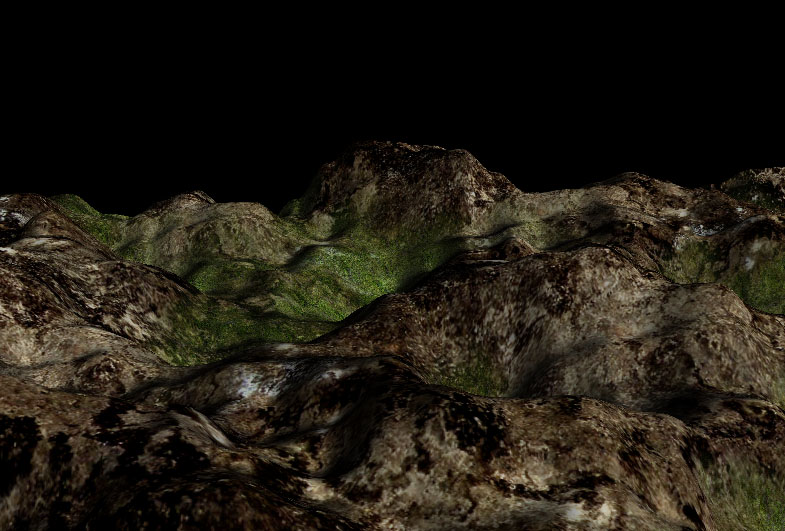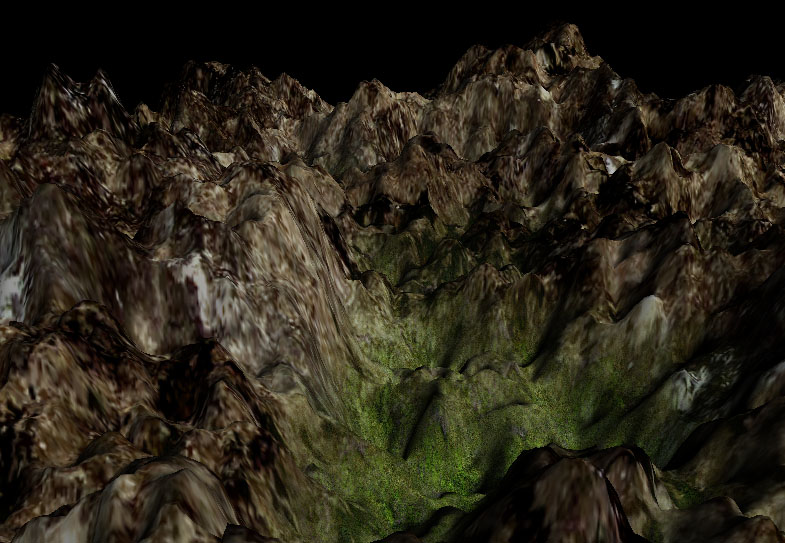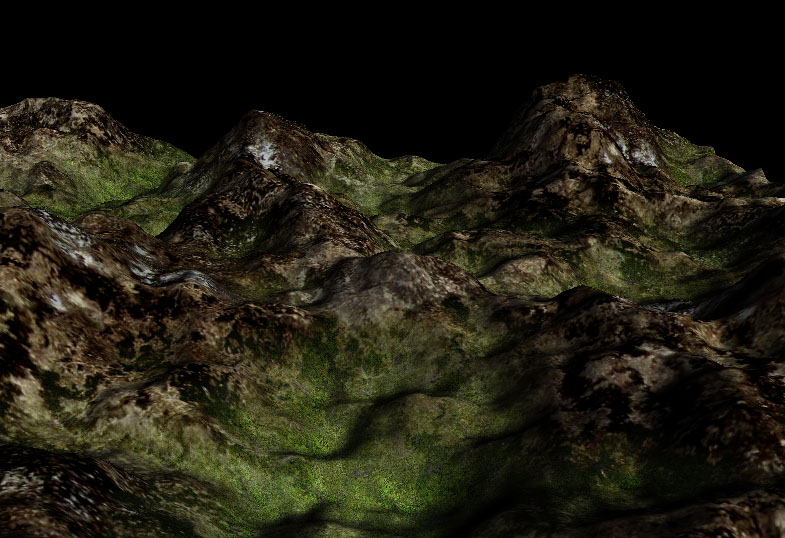
| Terrain maker |  |
First, a height field is created with a perlin noise. The figures below illustrates several parameters for the noise ( number of octaves and persistence). Then two textures are blended onto the terrain. Thr first one is the grass and the second one is the rocks. The blending coefficient is taken from a texture build with the same perlin noise as the one for the heights. Eventualy, a normal map is constructed from the height field. This normal is passed to the pixel shader to achieve the shadow effect ( in fact, it's a basic diffuse computation, but results are correct).
We can notice on the following pictures that results are good looking. But I should add mip-mapping for the grassy and rocky texture. Otherwise, when the view point is far from the land, results are poor, especially for the grass.
download : exe+sources (C++,HLSL and Visual C++ 6.0 project) (1815ko)
Require a graphic card with support of vertex shader 2_0 et pixel shader 2_0.
 |
| wide-angle view of the result |
 |
| perlin noise made with just 2 octaves (persistence = 0.6) |
 |
| perlin noise with 4 octaves, less natural (persistence = 0.6) |
 |
| still 4 octaves but a persistence of 0.4 |
 |
| 4 octaves, persistence 0.4 but stretch by 1.5 |
 |
| on this picture, i reduced the shadow coefficient |
| |
| the grass texture sampler is using mipmapping, results are better down in the valley but transition to rocky texture is a bit strange |
| |
| On this picture, the normal is used as the blend coefficient. |
| |
| this picture also uses the normal as blending coefficient but in a sotfer way |
Author : Adrien
Auclair
adrien.auclair at club-internet.fr
Last update : 11/10/2004